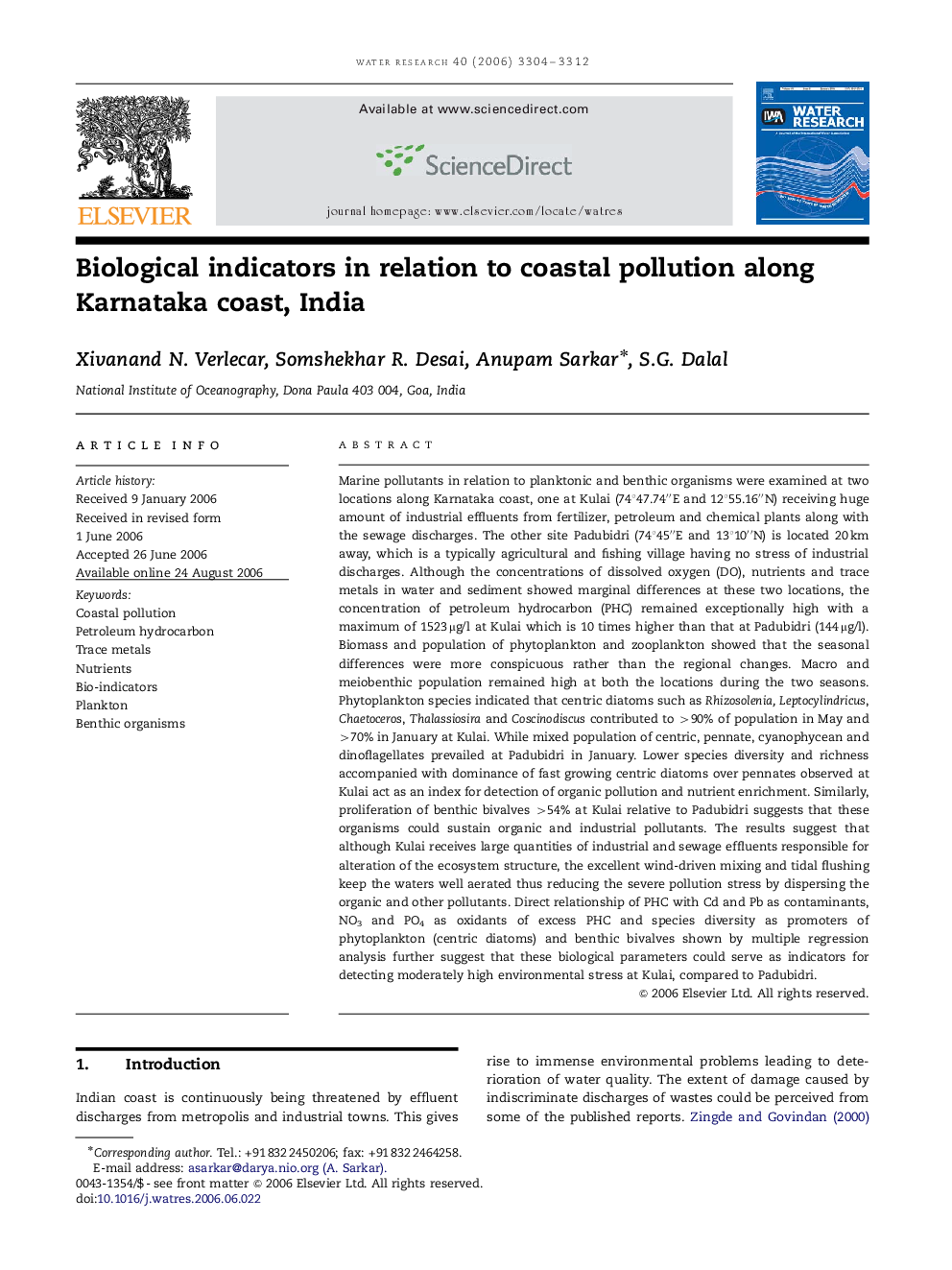| کد مقاله | کد نشریه | سال انتشار | مقاله انگلیسی | نسخه تمام متن |
|---|---|---|---|---|
| 4485943 | 1316970 | 2006 | 9 صفحه PDF | دانلود رایگان |

Marine pollutants in relation to planktonic and benthic organisms were examined at two locations along Karnataka coast, one at Kulai (74°47.74′′E and 12°55.16′′N) receiving huge amount of industrial effluents from fertilizer, petroleum and chemical plants along with the sewage discharges. The other site Padubidri (74°45′′E and 13°10′′N) is located 20 km away, which is a typically agricultural and fishing village having no stress of industrial discharges. Although the concentrations of dissolved oxygen (DO), nutrients and trace metals in water and sediment showed marginal differences at these two locations, the concentration of petroleum hydrocarbon (PHC) remained exceptionally high with a maximum of 1523 μg/l at Kulai which is 10 times higher than that at Padubidri (144 μg/l). Biomass and population of phytoplankton and zooplankton showed that the seasonal differences were more conspicuous rather than the regional changes. Macro and meiobenthic population remained high at both the locations during the two seasons. Phytoplankton species indicated that centric diatoms such as Rhizosolenia, Leptocylindricus, Chaetoceros, Thalassiosira and Coscinodiscus contributed to >90% of population in May and >70% in January at Kulai. While mixed population of centric, pennate, cyanophycean and dinoflagellates prevailed at Padubidri in January. Lower species diversity and richness accompanied with dominance of fast growing centric diatoms over pennates observed at Kulai act as an index for detection of organic pollution and nutrient enrichment. Similarly, proliferation of benthic bivalves >54% at Kulai relative to Padubidri suggests that these organisms could sustain organic and industrial pollutants. The results suggest that although Kulai receives large quantities of industrial and sewage effluents responsible for alteration of the ecosystem structure, the excellent wind-driven mixing and tidal flushing keep the waters well aerated thus reducing the severe pollution stress by dispersing the organic and other pollutants. Direct relationship of PHC with Cd and Pb as contaminants, NO3 and PO4 as oxidants of excess PHC and species diversity as promoters of phytoplankton (centric diatoms) and benthic bivalves shown by multiple regression analysis further suggest that these biological parameters could serve as indicators for detecting moderately high environmental stress at Kulai, compared to Padubidri.
Journal: Water Research - Volume 40, Issue 17, October 2006, Pages 3304–3312